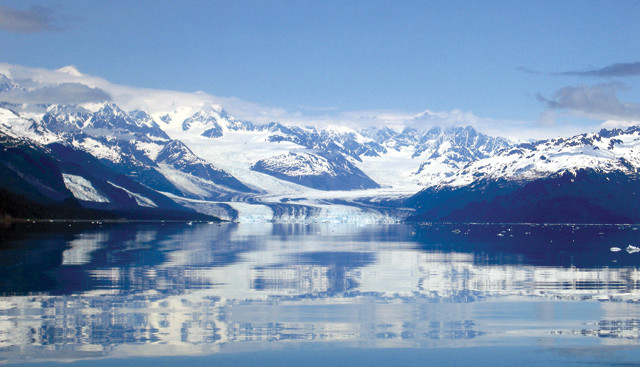Where on Earth? - March 2019
by The American Geosciences Institute
Thursday, February 21, 2019

Click to Enlarge Photo
Clues for March 2019:
- This Crimson-monikered tidewater glacier, which features prominent medial moraines, was first described by the 126-person Harriman Expedition of 1899 along with other nearby tidewater glaciers — Bryn Mawr, Smith, Vassar, Wellesley and Yale — that flow into an aptly named fjord.
- A 1913 U.S. Geological Survey report estimated the glacier’s cliff face was then more than 100 meters high, and an abundance of calving ice produced large waves and strong currents that made approaching it in a small boat impractical. The authors noted local reports of native seal hunters in bidarkas being drawn under the glacier by the strong currents.
- During the late Holocene, the fjord and its arms were filled entirely with ice that formed one large fjord glacier, which came to a standstill on four occasions, producing four large and distinctive moraines across the channel that remain today as shoals that breach the surface during low tide.
Name the volcano & its host country.
Submit your March 2019 answer now!
m>Scroll down for the answer
Answer: Check back later for the answer to and winners of the March Where on Earth? in EARTH.
Return to the Where on Earth? archive.
EARTH also welcomes your photos to consider for the contest. Learn more about submitting photos.

